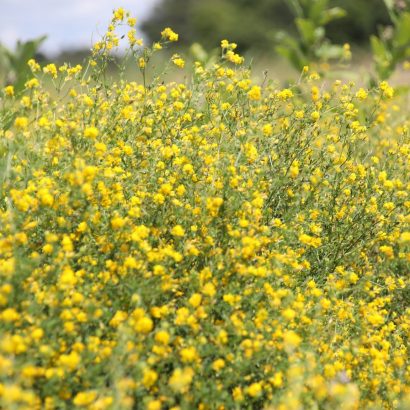Throughout January and February, I’m certain you could have attended a conference focused on soil health every week in the Midwest. The focus on soil has never been greater, and the emphasis is coming from farmer led associations, industry affiliations, NGO’s, and government agencies alike. This has been a very positive movement, ultimately letting landowners choose their involvement, while also incentivizing their activity. As livestock producers, we seem to have the upper hand when it comes to soil health and creating a diversified, circular system.
When I think about how soil heath pays, I think about building organic matter, increasing water holding capacity, and building biological activity. All three of these are results from the basic principles of soil health which are: soil armor, minimize soil disturbance, plant diversity, continuous living roots, and livestock integration. So how do we build out forage harvest plans while building soil health?
The most effective opportunity we have is to incorporate perennials into our farming rotations. Utilizing alfalfa in conjunction with perennial grasses and other legumes gives us plant diversity, continuous living roots, and soil armor – and we don’t disturb the soil while it’s in production. To achieve a diverse stand, add persistent good quality grasses such as orchardgrass, tall forage fescue, timothy, or pubescent wheatgrass. Along with alfalfa, there are perennial legumes like sainfoin, milkvetch, or birdsfoot trefoil that make great hay. This long-lived stand will have multiple layers of root channels that increase water infiltration and a root mass that stays in the soil to build organic matter levels. As this stand fades at the end of its life, the plant diversity will allow you to graze with little bloat risk and give your soil biology the benefit from livestock integration and manure distribution.
In an annual forage system, hold the same principles in mind when creating a harvestable feed. As a spring planted option, a blend of forage peas in conjunction with forage oats, triticale, and forage barley will yield three to four tons per acre of dry matter by early July. Since you’ll harvest all of that grown forage from the field, I’d recommend coming back into that field as soon as possible with a cover crop focused on grazing. Summer annuals with heat and drought tolerance should be the base of the mix, which would include grasses like pearl millet, sorghum and sudangrass hybrids, and teff or forage crabgrass. Grass species have a higher carbon to nitrogen ratio than broadleaves and are a key component to maintain soil armor and build residue to create additional organic matter. Warm season legumes rated good for grazing that need to be added for nitrogen fixation would be cow peas, forage soybeans, and dry beans. The other great grazing broadleaf that also adds diversity is sunflowers. Lastly, think about incorporating a brassica species to the blend for quality late season grazing and tap roots for an increase of soil pore space. Grazing radishes, forage turnips, and forage collards are the best species in this scenario.
The annual forage scenario checks each soil health principle and allows your flexibility with your cash crop farming rotation. Moving this practice to different fields each year begins to strengthen your operation’s production. Consistent harvested forage production and extra grazing acres allows for a more resilient system, while your focus on soil health builds your long-term resiliency – for a farm legacy that lasts for generations to come.




Discussion
0 Comments